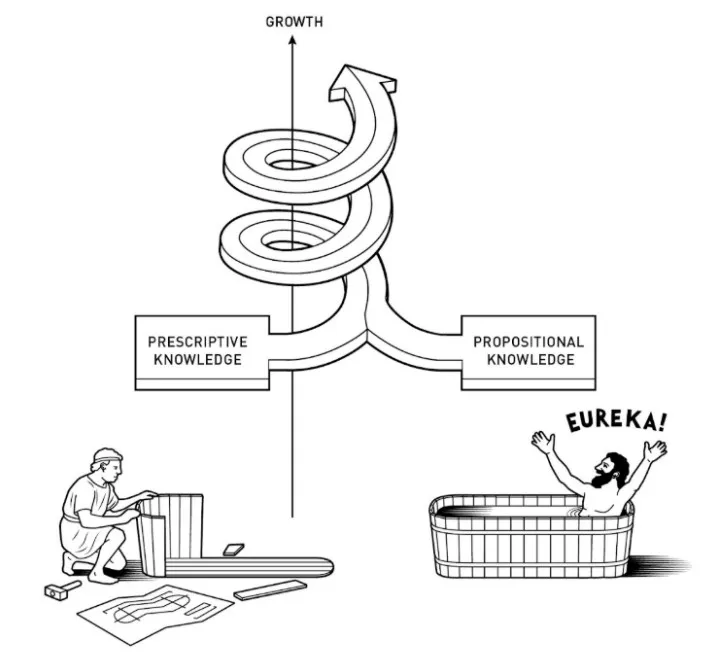Toronto, Ontario - (News Release - March 8, 2021) - (GLOBE NEWSWIRE), SideDrawer, the API-first...
Each year, the Nobel Prize in Economic Sciences recognizes ideas that fundamentally reshape how we understand progress.
The 2025 award honored Joel Mokyr, Philippe Aghion, and Peter Howitt for explaining how innovation fuels sustained economic growth, and why societies that nurture openness, experimentation, and adaptability thrive over time.
Their research captures something essential for every forward-thinking organization: that growth is not a one-time event, but a continuous system of learning and renewal. At SideDrawer, that mindset defines how we innovate with our clients, by blending insight with application, technology with trust, and disruption with long-term value.
Understanding the Engine of Growth
Mokyr’s historical work, notably The Culture of Growth, reveals that the Industrial Revolution’s success came from uniting useful knowledge with the freedom to apply it.
He distinguishes between two kinds of knowledge:
-
Propositional knowledge: understanding why something works.
-
Prescriptive knowledge: knowing how to make it work in practice.
When Enlightenment-era thinkers linked those two domains through experimentation and collaboration, innovation became self-sustaining. Aghion and Howitt later modeled this process mathematically in their theory of creative destruction (1992).
In their model, new technologies continually replace old ones, creating a dynamic equilibrium of growth — where progress depends on the constant renewal of ideas, institutions, and capabilities. Their insight reframed innovation not as chaos, but as a disciplined cycle of regeneration.
From Economic Theory to Product Practice
The Nobel committee’s Scientific Background emphasized that sustained growth depends on institutions and mindsets that reward adaptation. Innovation flourishes when new entrants can challenge incumbents, when knowledge flows freely, and when systems encourage experimentation without punishing failure. That philosophy drives how SideDrawer builds technology.
We treat innovation as a living system, an architecture that evolves as our clients evolve.
-
Our API-first vault architecture gives institutions the flexibility to connect workflows, analytics, and governance tools securely and seamlessly.
-
Our workflow and policy engines adapt to client-specific team structures and compliance frameworks, turning complex processes into programmable logic.
-
And our secure vault storage system enables structured, secure data collaboration that grows in sophistication as clients’ use cases expand.
Each enhancement builds on what came before, mirroring what Mokyr called the feedback loop between propositional and prescriptive knowledge, where theory and practice reinforce each other to drive progress.
Openness and Balance
Both Mokyr and Aghion highlighted that innovation requires openness, but not without balance. Mokyr’s research shows that technological revolutions flourish when societies embrace pluralism and knowledge exchange. While Aghion and Howitt’s model demonstrates that growth depends on calibrating competition: too little rivalry breeds stagnation, too much volatility undermines trust and investment. SideDrawer embodies that equilibrium.
Our open architecture welcomes integration and collaboration, while our governance model ensures data integrity and compliance at every layer. This balance between access and assurance lets our clients innovate confidently, knowing that transformation never compromises security or stability.
Creative Destruction, Applied Responsibly
The Nobel committee also underscored that innovation can move too fast when unchecked creative destruction risks leaving people or systems behind. The answer, they argue, lies in intentional design: building mechanisms that ensure innovation’s benefits diffuse widely and sustainably. At SideDrawer, that’s exactly how we approach change. We evolve quickly enough to stay ahead of client needs, but responsibly enough to ensure continuity and trust.
 Each new feature or integration is evaluated not just for what it replaces, but for what it enables:
Each new feature or integration is evaluated not just for what it replaces, but for what it enables:
-
Greater operational efficiency
-
More resilient compliance frameworks
-
Deeper interoperability across platforms
Innovation, in our view, isn’t about disruption for disruption’s sake. It’s about building stability through progress.
The Compound Effect of Collaboration
In economic terms, SideDrawer’s innovation model could be described as micro-level creative destruction with macro-level stability. We continuously refine details (e.g., architecture, workflows, analytics, etc.) while maintaining the trusted foundation our clients rely on. This process works because innovation, for us, is a shared endeavor. Through user studies, analytics collaborations, and co-design sessions, we gather insight directly from how our clients use the platform. That insight becomes the seed of our next product evolution ensuring that growth is always anchored in real-world experience. It’s the same dynamic the Nobel laureates describe: innovation sustained by feedback, collaboration, and openness.
Intentional Innovation
The 2025 Nobel Prize offers a reminder for every organization: sustained growth is never automatic. It depends on designing systems that make innovation repeatable by connecting discovery with implementation, and experimentation with purpose.
At SideDrawer, that’s our mission. We innovate not to chase trends, but to create continuous value through deliberate design and enduring partnership:
-
Connecting client experience to product evolution
-
Translating feedback into architecture
-
Turning collaboration into sustained growth
“Sustained growth isn’t the product of chance; it’s the product of intent.” And intent, paired with openness and trust, is what keeps economies and organizations moving forward.




.png?width=352&name=10-1%20(1).png)


.png)